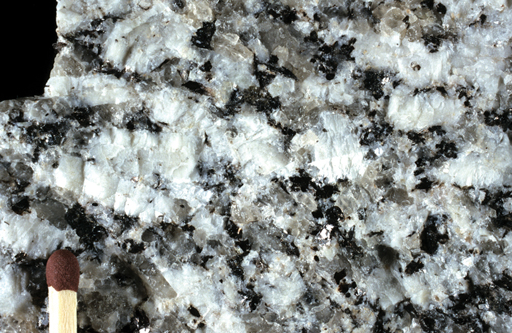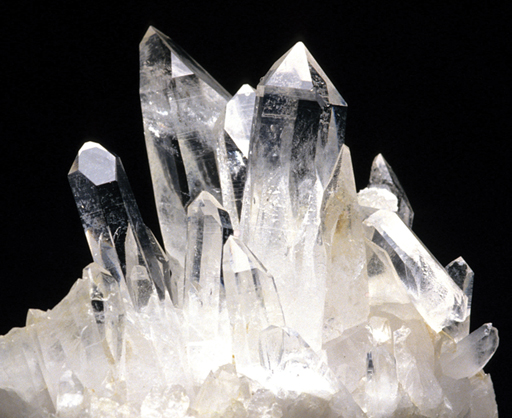1 Introducing crystals
Three distinct types of crystal, each of which is a different mineral, can be seen in the granite shown in Figure 1: shiny black biotite mica; cloudy white feldspar and translucent grey quartz.

The junction between any two adjacent crystals in the rock is called a grain boundary. Grain boundaries occur where crystals develop in contact with each other - here, during the cooling and crystallisation of magma to form granite. Grain boundaries also develop when minerals grow in the solid state during metamorphism.
Where the crystals form an interlocking mass, as in granite or marble, they rarely have the opportunity to develop good crystal faces. By contrast, the best-formed crystals are often ones that have grown into cracks or cavities (such as a gas bubble in a lava flow). Figure 2 shows several such quartz crystals that have grown into a cavity.

Crystals may be objects of great beauty, in part because of their almost perfectly flat crystal faces and geometric shapes. This regular external appearance is caused by a highly ordered internal arrangement of atoms known as the crystal structure, which leads to distinct, and to some extent predictable, physical and chemical properties.
Minerals, by definition, are solid substances. Before looking at the crystalline world in more detail, the next section considers briefly the various physical states that matter can have, and the transition from one state to another. These are concepts that are relevant at various stages throughout the course.
